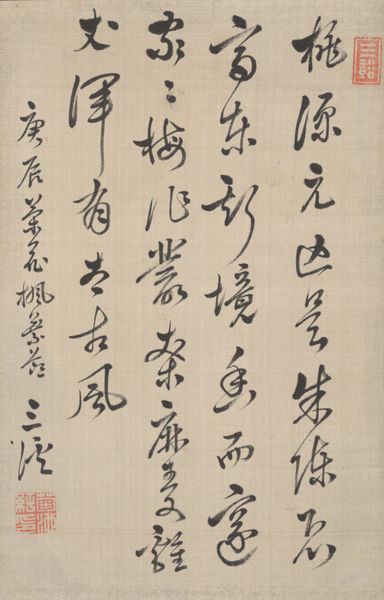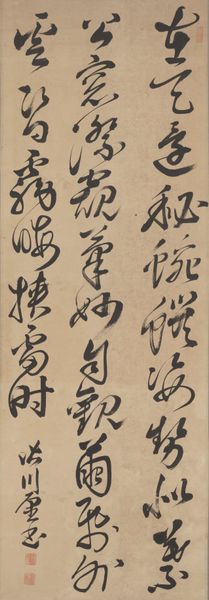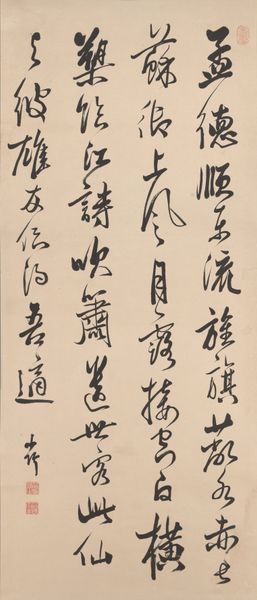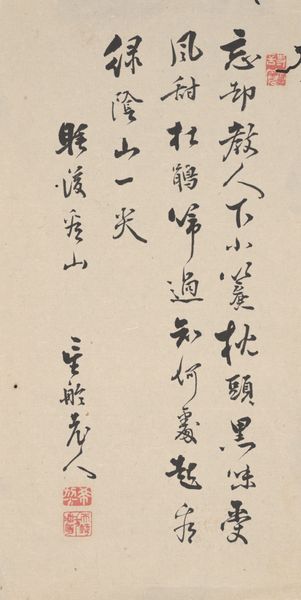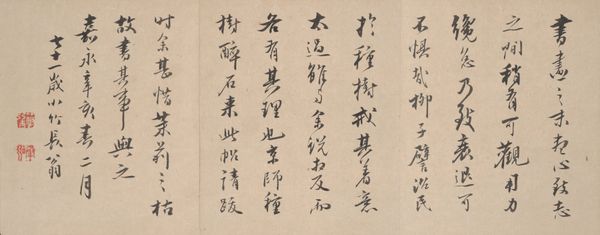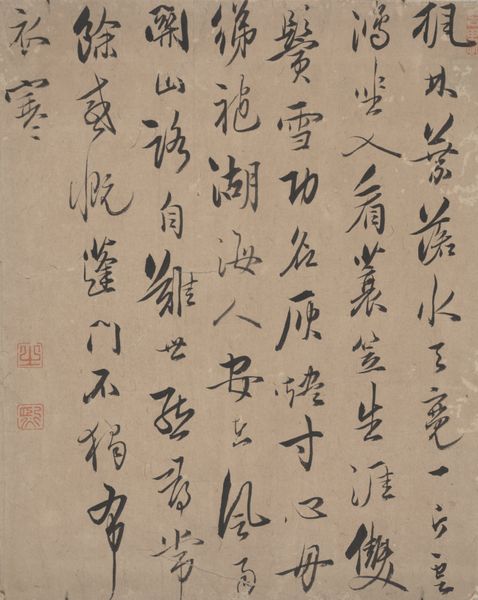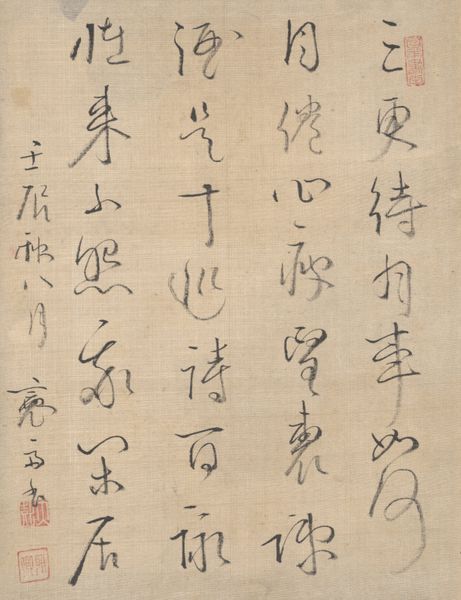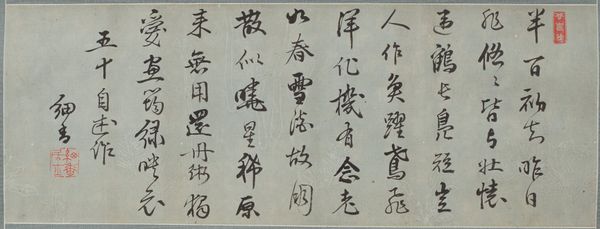
drawing, paper, ink
#
drawing
#
asian-art
#
paper
#
ink
#
calligraphy
Dimensions: 51 1/8 × 21 7/8 in. (129.86 × 55.56 cm) (image)72 1/2 × 25 5/16 in. (184.15 × 64.29 cm) (mount, without roller)
Copyright: Public Domain
Curator: Welcome! We're looking at Shinozaki Shochiku’s "Poem on the Wind," an ink on paper drawing, created around the mid-19th century. Editor: Immediately, I’m struck by its verticality, and the dynamic, almost frantic, energy in those brushstrokes. It feels raw, immediate, like capturing a fleeting moment. Curator: Shochiku, active in the Bunjinga movement, emphasized individual expression and scholarly ideals. Think about the literati context—these weren't just artworks; they were social statements, expressions of refined taste within a specific cultural sphere. Editor: And the tools are so basic. The paper, the ink, a brush – the whole focus hinges on the skill and control of the artist's hand. You can almost trace the artist's movements and intent as they interact with the fibers. It's amazing how just those simple materials produce something with such visual power. Curator: Absolutely, but the context is vital. These calligraphic works were integral to social and intellectual life of the time, embodying Confucian ideals, education and an almost performance of erudition. Editor: Maybe so, but there's a physical engagement happening as well! It makes me think about labor, time, and technique. The artist needed specialized tools and knowledge but there is also a very particular hand. The lines change as the artist seemingly adjusts pressure, which shows intent and possibly emotion as well. The ink is barely clinging to some strokes. I can even imagine the type of paper and absorbency. It is something so tangible and human, but is so quickly contextualized away. Curator: I understand. And I agree that the physicality is a way for us to understand the object, yet by ignoring social context and reducing it to the object alone is another erasure itself. It isn't one or the other. Editor: Exactly. It shows we must understand that something handmade tells so much about the person and era it came from! Curator: Yes, I have a newfound appreciation for it as well!
Comments
No comments
Be the first to comment and join the conversation on the ultimate creative platform.
